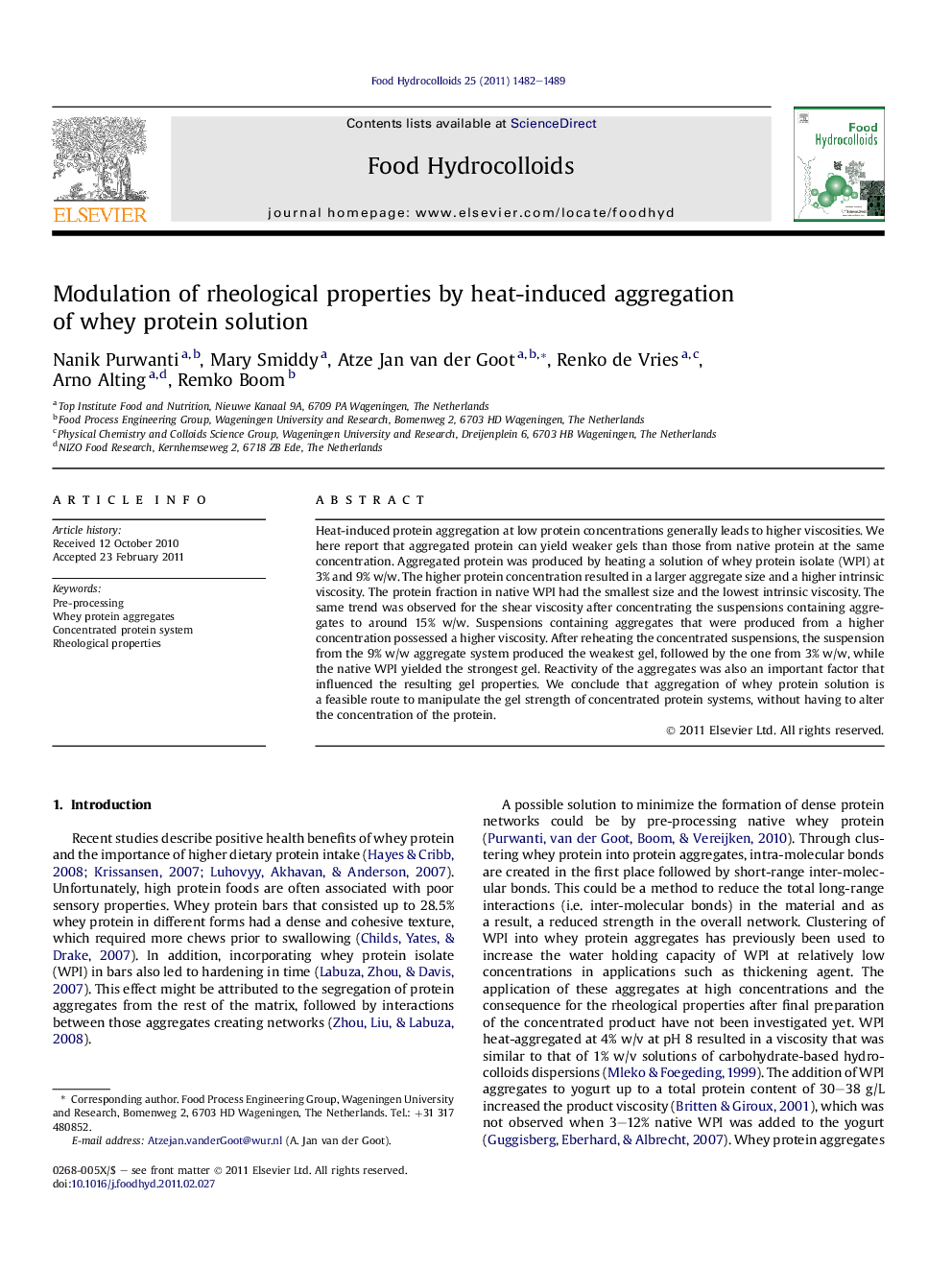| Article ID | Journal | Published Year | Pages | File Type |
|---|---|---|---|---|
| 604547 | Food Hydrocolloids | 2011 | 8 Pages |
Heat-induced protein aggregation at low protein concentrations generally leads to higher viscosities. We here report that aggregated protein can yield weaker gels than those from native protein at the same concentration. Aggregated protein was produced by heating a solution of whey protein isolate (WPI) at 3% and 9% w/w. The higher protein concentration resulted in a larger aggregate size and a higher intrinsic viscosity. The protein fraction in native WPI had the smallest size and the lowest intrinsic viscosity. The same trend was observed for the shear viscosity after concentrating the suspensions containing aggregates to around 15% w/w. Suspensions containing aggregates that were produced from a higher concentration possessed a higher viscosity. After reheating the concentrated suspensions, the suspension from the 9% w/w aggregate system produced the weakest gel, followed by the one from 3% w/w, while the native WPI yielded the strongest gel. Reactivity of the aggregates was also an important factor that influenced the resulting gel properties. We conclude that aggregation of whey protein solution is a feasible route to manipulate the gel strength of concentrated protein systems, without having to alter the concentration of the protein.
Graphical abstractFigure optionsDownload full-size imageDownload as PowerPoint slide
